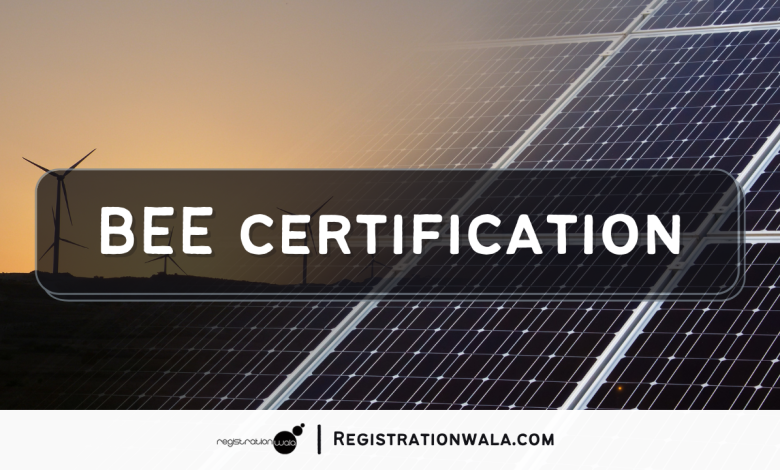Bureau of Energy Efficiency: Schemes defined under BEEC

The BEE certification of the Bureau of Energy Efficiency Certification is provided to the manufacturers of electronic and electrical appliances. The BEE certificate rates the energy efficiency of an appliance. This rating system allows electronic consumers to assess better which utility product to purchase from the market.
Since the products available in the market are so diverse, so for ease of operations, the Bureau of Energy Efficiency has launched various schemes to cater to the ever-encompassing electricals and electronics in the Indian as well as International markets. Read More: Insurance Broker License
The Bureau of Energy Efficiency has launched the following schemes:
National Mission for Enhanced Energy Efficiency (NMEEE)
National Mission for Enhanced Energy Efficiency (NMEEE) is one of the eight national missions under the National Action Plan on Climate Change (NAPCC), released in June 2008 by the Government of India. The mission’s primary objective is to develop regulations as well as policies instrumental in strengthening the market for energy efficiency.
Energy Conservation Building Code (ECBC)
Energy Conservation Building Code or ECBC is a code that provides minimum requirements for the energy-efficient design and construction of buildings, and it applies to large commercial buildings with a connected load of 100 kW and above or 120 kVA and above.
Standards and Labeling Scheme
The Standards and Labeling (S&L) program was initiated with the key objective of providing consumers with an informed choice regarding energy savings and the cost-saving potential of various energy-consuming appliances.
Therefore, the S&L scheme covers the star labelling program for 28 appliances, out of which 10 are under the mandatory regime, and the remaining 18 are under the voluntary regime. The vital benefits of the S&L scheme are the following bullets:
- Significant impact on consumers purchasing energy-efficient appliances through a structured consumer awareness program.
- Market Transformation from inefficient appliances to energy-efficient ones.
Demand Side Management (DSM) Scheme
Demand Side Management (DSM) has been traditionally recognized as one of the major interventions to achieve a reduction in energy demands while ensuring continuous development.
DSM interventions have helped utilities reduce the peak electricity demands and defer high investments in generation, transmission, and distribution networks. There are two types of DSM in the BEE:
- Municipal Demand Side Management (MuDSM) scheme
To tap the energy savings potential of municipalities, BEE initiated a nationwide Municipal Demand Side Management (MuDSM) program to address Energy Efficiency in drinking water as well as sewage water pumping systems, street lighting, and public building across the Urban Local Bodies (ULBs) and Municipalities. Read More: Insurance Self Network Platform
- Agricultural Demand Side Management (AgDSM) Scheme
This program promises energy efficiency through agriculture demand-side management by the following:
- Reduction in overall power consumption
- Improving efficiencies of groundwater extraction
- Reducing subsidy burden on state utilities
- Investment in power plants through avoided capacity
Capacity Building of DISCOMs
DSM programs help utilities reduce their peak power purchases by lowering their overall cost of operations. The capacity building, as well as other support, are essential for the DISCOMs to implement DSM in their respective areas.
In this context, the Bureau of Energy Efficiency had launched a program for capacity building of DISCOMs. Also, this has helped build DISCOMs officials’ capacity and develop various mechanisms to promote DSM in their respective areas.
Strengthening of State Designated Agencies (SDAs)
The Energy Conservation Act mandates the creation of a two-tier organization structure to promote the efficient use of energy.
Therefore, this conservation in the country with BEE as the nodal agency at the central level and SDAs as nodal agencies at State / Union Territory (UT) level was established under the EC Act. Read More: section 8 Company
The Bureau of Energy Efficiency launches various schemes to assess and rate the quality of electronic and electrical appliances available in the Indian market.




